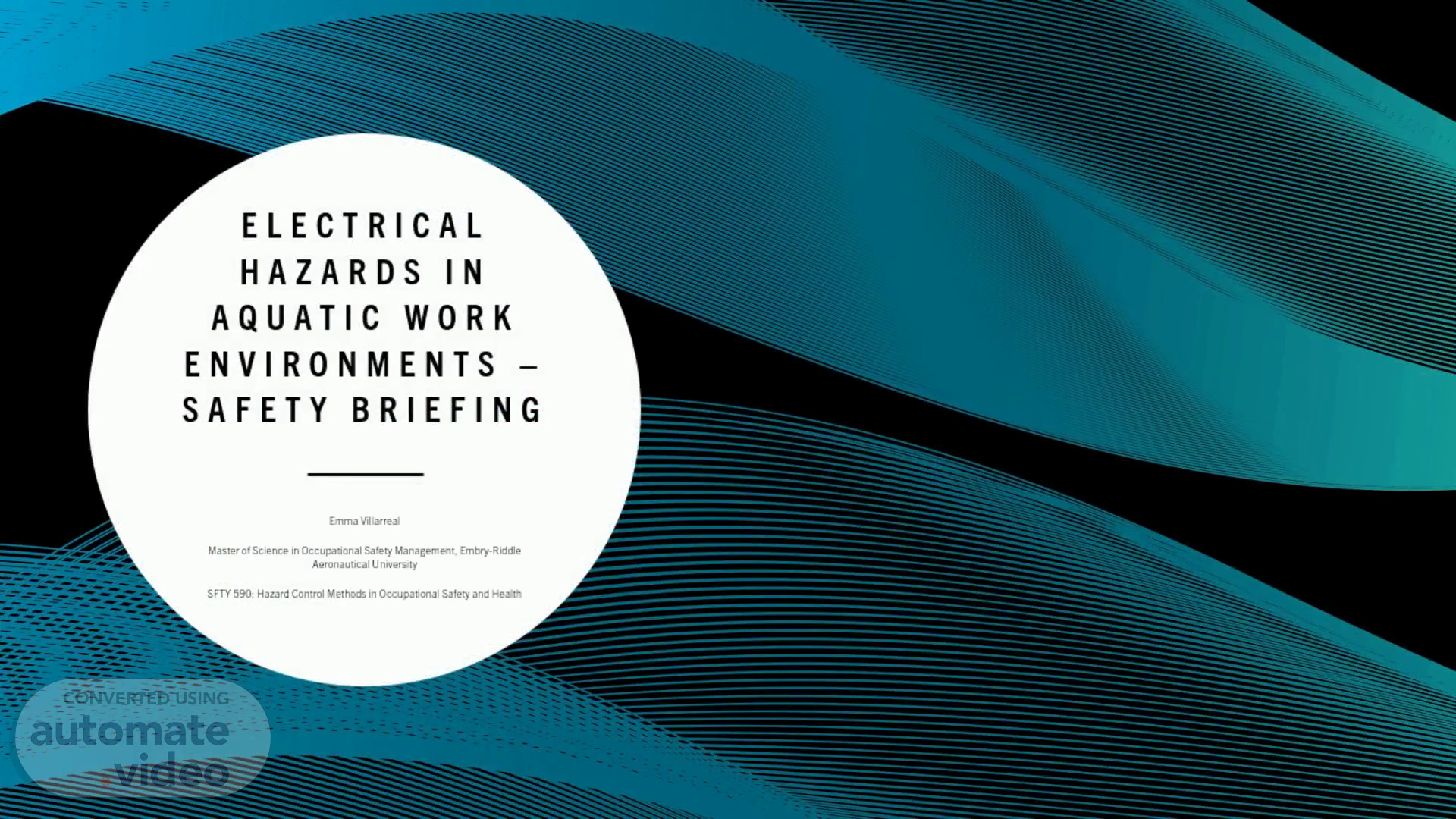
Electrical Hazards in aquatic work environments – Safety Briefing
Scene 1 (0s)
Background pattern Description automatically generated.
Scene 2 (13s)
Job tasks with electrical hazards. Water changes Pump maintenance Cleaning and replacing filters Setting heaters Setting lights.
Scene 3 (47s)
Identify hazards. Electric equipment in work area with high exposure risk to water, including: Outlets, Lights, Heaters, Pumps and other devices. Electricity and water combined can result in workplace fires or serious injuries to aquarists and zoo-housed animals..
Scene 4 (1m 28s)
Identify controls. Engineering: Monthly-tested ground-fault circuit interrupter (GFCI) outlets, Ensure outlet capacities are suitable for equipment, Ground or double-insulate electrical equipment, Outlet and switch cover plate installation, Six-foot rule Administrative: Inspect equipment frequently and do not use broken gear, Drip loops on cords, Do not handle dry-required electrical equipment with wet hands, Unplug electrical equipment before performing tank maintenance, Prevent complacency.
Scene 5 (3m 5s)
What to do in emergency. Shut off Shut off power source immediately, if possible. Do not touch If power source cannot be shut off, do not touch person or equipment as electric current is still flowing. If a person needs to be removed from the electric source, use a non-conducting object and call 911 immediately. Consult Consult with electrician if source needs servicing or replacing prior to utilizing again..
Scene 6 (3m 42s)
Training Importance. Employees should undergo training to understand the hazards of electrical equipment in the wet aquarium work environment, and how to prevent risk exposure to better protect their safety as well as the animals’ health. This training should be in accordance to: Occupational Safety and Health Administration (OSHA) Electrical Standards Association of Zoos & Aquariums (AZA) accreditation standard 11.3.4.
Scene 7 (4m 14s)
References. Association of Zoos and Aquariums. (2015, August). Zoo & aquarium safety: Example practices. https://assets.speakcdn.com/assets/2332/safety-example-practices-for-aquariums-zoos-2015-.pdf . Jenn. (2019, January 22). Common Electrical Hazards . TPC Training Blog. https://www.tpctraining.com/blogs/news/common-electrical-hazards#:~:text=If%20possible%2C%20shut%20off%20the,Call%20911%20immediately . National Fire Protection Association. (2017). Electrical safety around swimming pools, hot tubs, and spas . https://www.nfpa.org/-/media/Files/Public-Education/Resources/Safety-tip-sheets/ElectricalWaterSafetyTips.ashx#:~:text=Electrical%20appliances%2C%20equipment%2C%20and%20cords,televisions%2C%20radios%2C%20and%20stereos.&text=Avoid%20handling%20electrical%20devices%20when%20you%20are%20wet. Ontario Secondary School Teachers’ Federation. (n.d.). Electrical hazards involving aquariums in schools . Protecting and Enhancing Public Education. https://www.osstf.on.ca/services/health-safety/information-bulletins/electrical-hazards-involving-aquariums-in-schools.aspx . Reef Sump. (n.d.). Top 10 aquarium electrical safety tips . https://reefsump.com/top-10-aquarium-electrical-safety-tips/ ..